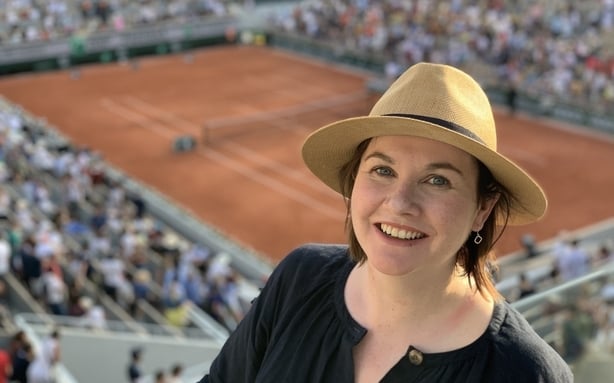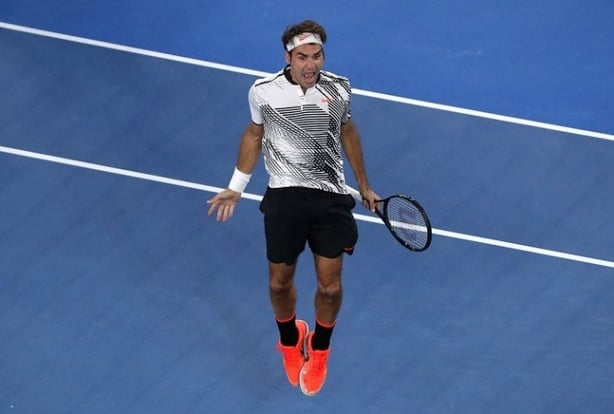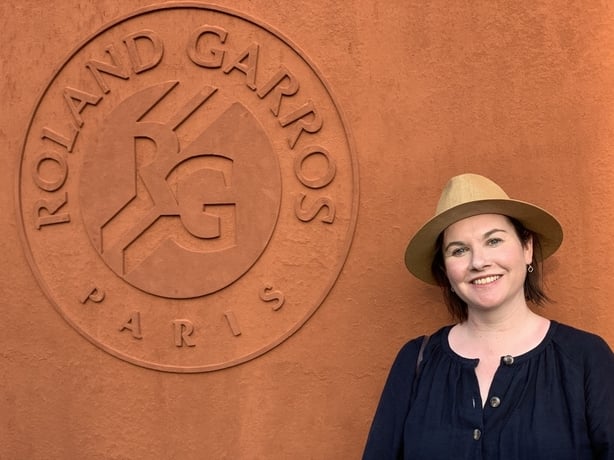It's a hot afternoon in Paris, and I am breathing the same air as Roger Federer.
As landmark life-moments go, this falls solidly into the Tell-Future-Grandchildren section. In fact, as Roger Federer walks out onto the clay of Roland Garros, and places his bag on the appointed seat, I am simultaneously witnessing it happen, and remembering it as if years from now. It is completely astonishing to see him in the flesh. It confirms that he really does exist - tennis obsessives didn't just will this example of perfection into being. He is, in fact, human.
Seeing a tennis ball ping off the racket of Roger Federer is the kind of experience that makes you re-evaluate all that went before. This is Rudolf Nureyev; this is Silvie Guillem; this is Fred Astaire.
The players ready themselves to get going, the umpire tosses a coin to decide who will serve first, and who will take what side… Pictures are taken, hands are shaken… And all the while, the tension in the crowd at Court Philippe Chatrier mounts steadily. When is he going to hit the ball? And what will it feel like to see him do that?

Formalities over, the players start to warm up. Now clearly, at this point in the story, I should be telling you something about the opponent, who is a Top 100 ranked Argentinian, disgustingly young, incredibly talented (he is at the French Open after all) and by all reasonable measures, playing out of his skin because he is into the last 16 of a Grand Slam tennis tournament… But I’m not going to tell you about him, because it doesn’t matter. This is about Roger. This is about bearing witness to the man put on Earth to give us mortals a glimpse of how God intended tennis to be played.
We need your consent to load this rte-player contentWe use rte-player to manage extra content that can set cookies on your device and collect data about your activity. Please review their details and accept them to load the content.Manage Preferences
Listen: Sinead Egan on the impact of tennis on culture, via RTÉ Arena
He, Roger, casually starts to hit shots back and forth with his opponent. Each time his racket connects with the ball, the crowd cheers with sincere approval. He looks bashful, almost embarrassed at this over-enthusiastic show of appreciation - he is, after all, just doing his job… but his job is playing perfect tennis - sublime tennis, creative tennis, impossible tennis. It strikes me that had a similarly well-disposed group of people gathered around Picasso as he sketched and doodled, he would have elicited a similar response…
The match starts, and it is hard not to feel mesmerised by what is happening on court.
Just for a bit of context - for me, almost any level of tennis is worth watching, especially when it is live in front of you and the players, no matter the standard, are well matched. Seeing elite players face off against each other - with their grace, their armoury of shots, and their sheer power - is a bigger treat again. But seeing a tennis ball ping off the racket of Roger Federer is the kind of experience that makes you re-evaluate all that went before. This is Rudolf Nureyev; this is Silvie Guillem; this is Fred Astaire.

The match starts, and it is hard not to feel mesmerised by what is happening on court. At the age of 37 (now 39 of course) the chatter around Federer is about whether he is going to retire, whether this is his last season. And watching him take on this far younger rival, you do get the sense that he is pacing himself; he doesn’t feel the need to push for the early break, he knows that it will come… that at some point, he will have 30-40 on the other guy’s serve, and the unimaginable angle, passing shot or volley will just come. And it does.
As the match goes on, I start daydreaming about tennis balls, and what would happen if they were sentient beings… Would there be a hierarchy within their society, meaning that the tennis balls blasted across a court by Roger Federer would be somehow special? Would they be marked apart?
Watch: Federer in action at Roland Garros 2019
After each set, the custom in Roland Garros is to respray the clay courts with water, and sweep them smooth. At the start of the third, it is Federer to serve, and he is doing so just below where I am sitting. I watch intently, trying to simultaneously analyse and appreciate the graceful motion of his serve, to learn from it - but it’s impossible. He hits an ace, and even his sweeping footprints marked out on the newly swept baseline clay look like mysterious hieroglyphics that might hold some kind of secret power, if only you could unlock their meaning.

He wins - of course he wins - in three respectable sets. He had the grace not to thrash the guy - and the crowd got to watch him play for two glorious hours. As he packs up to leave, I crane my neck to see every last moment of him on court. And after he has gone, I immediately wonder if he was ever really there.
Sinead Egan is the producer of Arena, RTÉ Radio 1, weekdays at 7 pm - listen back here.

